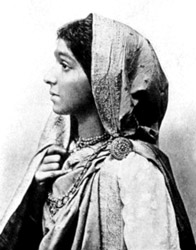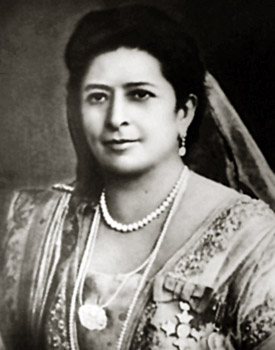 Condition of Women in India through Ages has undergone through different phases. Each of these phases has cast profound effect on the lives of women. Inequality and discrimination had been an important issue in the life of women since ancient past. Continuous efforts and struggle however have helped them to resolve this issue and the present scenario narrates the story of their success very well.
Condition of Women in India through Ages has undergone through different phases. Each of these phases has cast profound effect on the lives of women. Inequality and discrimination had been an important issue in the life of women since ancient past. Continuous efforts and struggle however have helped them to resolve this issue and the present scenario narrates the story of their success very well.
Condition of Women in Vedic Age
Ancient texts and researches have furnished that during Vedic period women enjoyed an equal position with men. Ample freedom was given to them in terms of education, religious activities, marriage and many other aspects. Hindu philosophy during Vedic Age believed in the feminine principle of energy which gave rise to the tradition of worshipping the female goddess. Goddess Durga, Goddess Kali and Goddess Lakshmi were the manifestation of this very belief. Brahmavadinis was the name given to the learned women. Female sages and scholars of this age enlist Ambhrni, Gargi, Khona and Romasa. Co-education was quite prevalent in this era and women belonging to Kshatriya caste were also trained with martial arts. Women of royal families enjoyed the privilege of choosing her life partner through the custom of `Swayamvara`. Divorce and remarriage of women was very much acceptable under unfortunate circumstances. No merciless practices were forced upon the women of Vedic age after the demise of her husband.
 Condition of Women in Epic Era
Condition of Women in Epic Era
Epic era encountered a huge transformation in terms of the condition of women. Epics in Hindu mythology depict the actual scenario of the condition of women during this era. The classical epics like Ramayana and Mahabharata establish the fact that women still had some liberty in various activities but the respect conferred on them had started to decrease. Education became less important for the women of this era and they started to lag behind men in terms of knowledge. Epics do not have the mention of women scholars. Women in Epic Era had no role to play in politics. Many incidents in the epics also narrate the humiliations conferred upon a woman by men. They clearly state that the position of women in Epic era was much lower than that of men.
Condition of Women in Medieval Period
During medieval period the condition of women in India experienced further deterioration. In this era, merciless practices like Sati and child marriage became an inseparable part of the society. A prohibition on remarriage was also imposed on women. With the advent of Muslim rule in India the custom of `purdah` became prevalent. Sexual exploitation of temple women, also known as devdasis, and polygamy also crept into the society. In spite of this deterioration, some of the Indian women still emerged as prominent personalities who influenced the society in many ways. Razia Sultana, queen Durgavati, Chand Bibi, Nur Jahan are some of the brave women who, despite of so much of exploitation, raised a voice against various unjust practices. Numerous efforts were put in this era to improve the condition of women. Bhakti movement is one such effort which questioned many of the oppressions imposed upon women. Several sects of Bhakti like Varkari and Mahanubhav exerted ample efforts to abolish the social injustice bestowed on women and the inequality among men and women. Many Sikh Gurus in India also advocated against the discrimination of women.
 Condition of Women during British Rule
Condition of Women during British Rule
During British rule, many social reformers emerged in the country who worked for the betterment of the condition of women in India. Prominent names among them are Ram Mohan Roy, Jyotirao Phule and Ishwar Chandra Vidyasagar. Peary Charan Sarkar, who was a former student of Hindu College, had set up a school in Barasat, West Bengal, for providing free education to girls. Some British personalities also had considerable contribution in the improvement of the status of women. Several women reformers like Pandita Ramabai also worked for the cause of women in the society. During the freedom struggle of India, Government also took an active part for the betterment of women. Various laws like Child Marriage Restraint Act, were brought into force to protect the women against discrimination. Efforts were also put to save the political rights of women. During British rule, many female freedom fighters also emerged who actively took part in the Indian freedom struggle. These women freedom fighters include Bhikaji Cama, Pritilata Waddedar, Annie Besant, Rajkumari Amrit Kaur, Kasturba Gandhi, Sucheta Kriplani and Durgabai Deshmukh.
Condition of Women in Independent India
In independent India, women enjoy liberty and equality in all aspects of society such as education, politics, sports, art and culture, media, science and technology. Several laws have been enacted that protect social discrimination of women. In India, the Constitution ensures equality of women, prohibition of discrimination, and equality in terms of pay for work and equality in opportunity. Since late 1970s feminist activism in India also acquired momentum and various women`s groups collaborated to oppose the unjust activities against women. Women in independent India also took part in the national issues including female infanticide, women`s literacy, gender bias and women`s health.
Women in India have witnessed numerous phases. The privileges that Indian women enjoyed in the ancient past gradually declined with time and discrimination became an inseparable part of the lives of Indian women in the society. However through the efforts of many social reformers, they succeeded in regaining the respect and equality in the society. Bravery of several women in the society also fuelled the spirit and urge of women to acquire a respectable position in the society.










